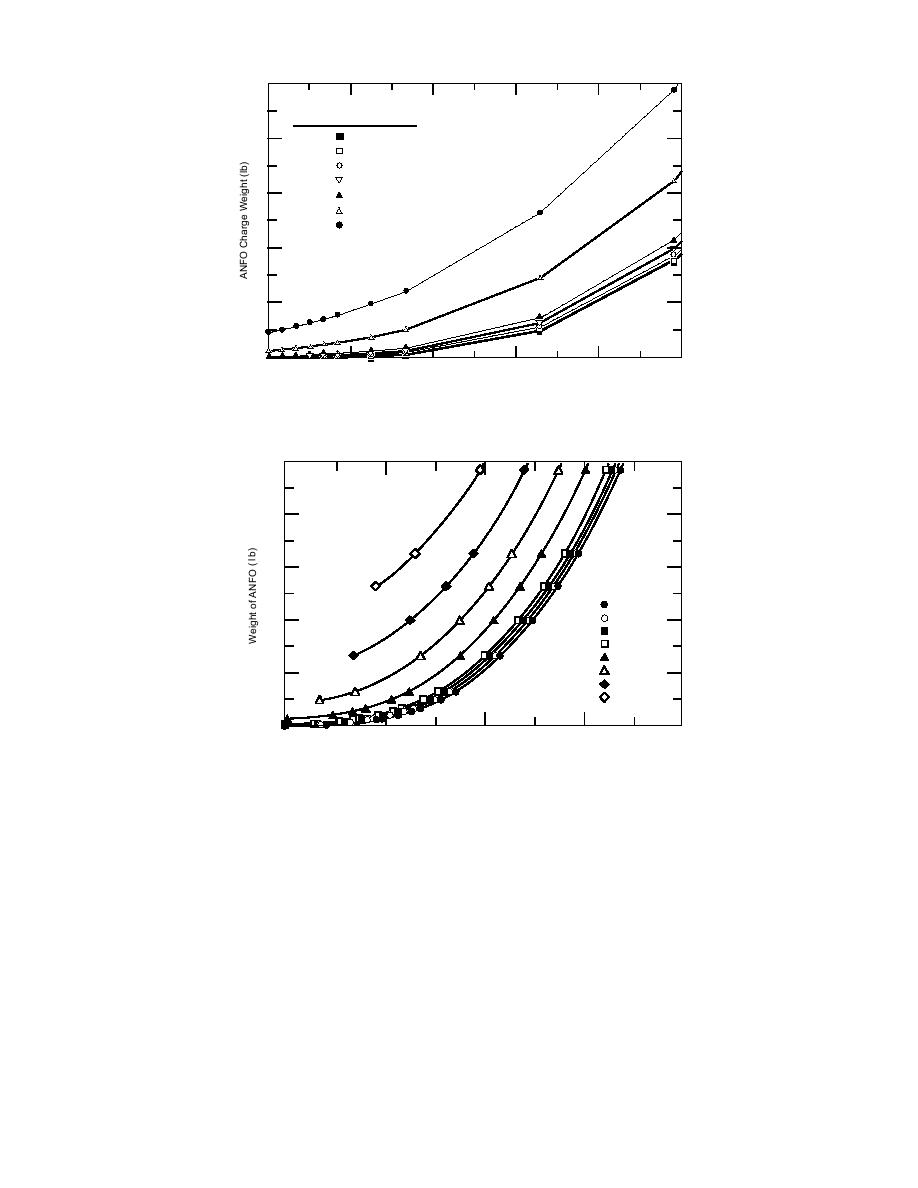
50
Depth of Charge
Below Bottom of Ice Sheet
0 ftt
0f
40
0.6
0.6
1.6
1.6
2.5
2.5
30
3.3
3.3
6.6
6.6
3.0
3.0
20
10
0
2
4
6
8
10
Ice Thickness (ft)
Figure 23. Minimum charge placed below ice surface required to break ice.
(After Van der Kley 1965.)
200
160
120
Ice Thickness (ft)
00.66
01.60
80
02.50
03.30
06.60
09.80
40
13.10
16.40
0
20
40
60
80
Crater Diameter ( ft )
Figure 24. Crater diameter for ANFO charges placed just below the
underside of the ice. (After Van der Kley 1965.)
the bottom of the ice surface at which the charge
is required to break ice as the charge depth in-
will explode must be estimated. It is important to
creases. However, this is just a minimum charge;
be sure the charge is below the bottom surface of
larger charges can be used. Van der Kley also
the ice because blasting above the ice takes a sub-
developed curves for determining the crater di-
stantially larger charge to accomplish the same
ameters for various charge sizes and ice thick-
thing. From Figure 23, the minimum charge re-
nesses. Figure 24 illustrates the crater diameters
quired is found by first going to the appropriate
for charges that explode just below the bottom
ice thickness and drawing a line straight up until
surface of the ice.
it intersects the curve for the depth at which the
The crater diameter is defined as the distance
explosive will detonate. A straight line is then
across the approximately circular hole from which
drawn to the left to find the minimum charge
most ice is thrown clear. Larger charges create
weight required to break the ice. A larger charge
larger craters, and larger charges are needed to
50



 Previous Page
Previous Page
